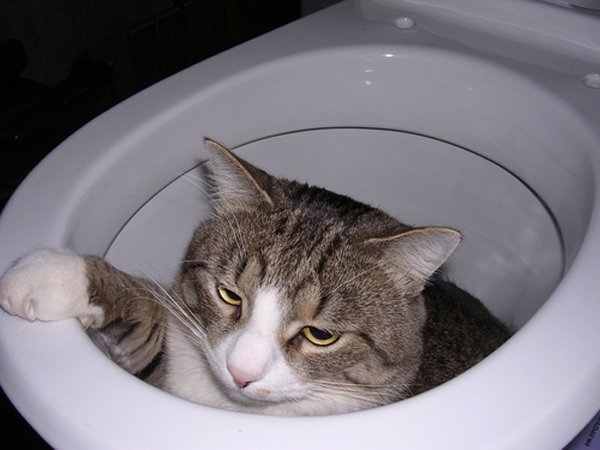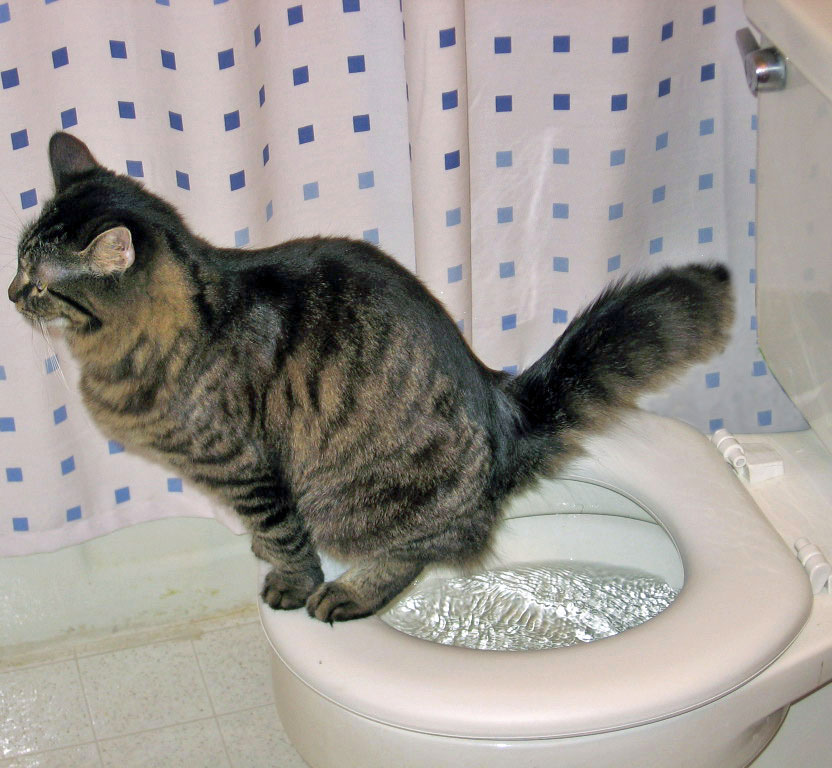Reasons Flushing Cat Poop Down Your Toilet Is Bad - Tips for Correct Disposal
Reasons Flushing Cat Poop Down Your Toilet Is Bad - Tips for Correct Disposal
Blog Article
Were you on the lookout for resources concerning Don’t flush cat feces down the toilet?

Intro
As pet cat proprietors, it's essential to be mindful of how we take care of our feline friends' waste. While it may appear convenient to purge pet cat poop down the commode, this method can have harmful consequences for both the environment and human health.
Alternatives to Flushing
The good news is, there are much safer and much more accountable ways to take care of feline poop. Take into consideration the complying with options:
1. Scoop and Dispose in Trash
One of the most usual technique of dealing with feline poop is to scoop it into a naturally degradable bag and throw it in the trash. Make certain to make use of a committed litter inside story and take care of the waste promptly.
2. Usage Biodegradable Litter
Choose biodegradable cat trash made from products such as corn or wheat. These trashes are eco-friendly and can be safely thrown away in the garbage.
3. Hide in the Yard
If you have a lawn, think about burying cat waste in a designated area away from veggie yards and water sources. Be sure to dig deep enough to prevent contamination of groundwater.
4. Mount a Pet Waste Disposal System
Purchase a pet dog garbage disposal system particularly designed for pet cat waste. These systems use enzymes to break down the waste, reducing smell and environmental influence.
Health Risks
In addition to environmental worries, flushing pet cat waste can likewise posture health and wellness risks to human beings. Cat feces might contain Toxoplasma gondii, a parasite that can create toxoplasmosis-- a potentially serious illness, specifically for expecting ladies and individuals with damaged body immune systems.
Ecological Impact
Flushing pet cat poop introduces unsafe pathogens and bloodsuckers into the water system, posturing a significant risk to water ecological communities. These contaminants can negatively affect aquatic life and concession water top quality.
Final thought
Responsible animal possession expands beyond offering food and shelter-- it also includes appropriate waste monitoring. By refraining from purging feline poop down the bathroom and selecting different disposal techniques, we can lessen our ecological footprint and protect human health.
Why Can’t I Flush Cat Poop?
It Spreads a Parasite
Cats are frequently infected with a parasite called toxoplasma gondii. The parasite causes an infection called toxoplasmosis. It is usually harmless to cats. The parasite only uses cat poop as a host for its eggs. Otherwise, the cat’s immune system usually keeps the infection at low enough levels to maintain its own health. But it does not stop the develop of eggs. These eggs are tiny and surprisingly tough. They may survive for a year before they begin to grow. But that’s the problem.
Our wastewater system is not designed to deal with toxoplasmosis eggs. Instead, most eggs will flush from your toilet into sewers and wastewater management plants. After the sewage is treated for many other harmful things in it, it is typically released into local rivers, lakes, or oceans. Here, the toxoplasmosis eggs can find new hosts, including starfish, crabs, otters, and many other wildlife. For many, this is a significant risk to their health. Toxoplasmosis can also end up infecting water sources that are important for agriculture, which means our deer, pigs, and sheep can get infected too.
Is There Risk to Humans?
There can be a risk to human life from flushing cat poop down the toilet. If you do so, the parasites from your cat’s poop can end up in shellfish, game animals, or livestock. If this meat is then served raw or undercooked, the people who eat it can get sick.
In fact, according to the CDC, 40 million people in the United States are infected with toxoplasma gondii. They get it from exposure to infected seafood, or from some kind of cat poop contamination, like drinking from a stream that is contaminated or touching anything that has come into contact with cat poop. That includes just cleaning a cat litter box.
Most people who get infected with these parasites will not develop any symptoms. However, for pregnant women or for those with compromised immune systems, the parasite can cause severe health problems.
How to Handle Cat Poop
The best way to handle cat poop is actually to clean the box more often. The eggs that the parasite sheds will not become active until one to five days after the cat poops. That means that if you clean daily, you’re much less likely to come into direct contact with infectious eggs.
That said, always dispose of cat poop in the garbage and not down the toilet. Wash your hands before and after you clean the litter box, and bring the bag of poop right outside to your garbage bins.
https://trenchlesssolutionsusa.com/why-cant-i-flush-cat-poop/

I was made aware of that editorial on Don’t flush cat feces down the toilet from an acquaintance on another domain. Are you aware of somebody else who is involved in the topic? Be sure share it. Thanks a bunch for your time. Kindly come visit our website back soon.
Call Today Report this page